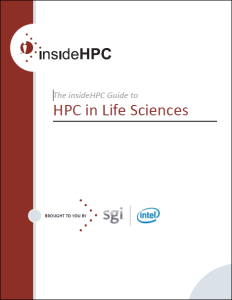This is the 1st of 6 article series on the trends and technologies impacting the application of HPC in Life Sciences.
Introduction
The term next generation sequencing (NGS) is really a misnomer. NGS implies a single methodology, but the fact is that over the past 10 to 15 years there have been multiple generations and the end is nowhere in sight. Technological advances in the field are continuing to emerge at a record setting pace.
Early sequencing efforts used a methodology known as Sanger chemistry, which employs specifically labeled nucleotides to read through a DNA template during DNA synthesis. Despite technical innovations, after 25 years the Sanger method had reached the limits of its capability to handle large genomic datasets.
NGS, an important new approach to sequencing, removed these roadblocks. The technology achieved a major milestone in 2000 when Craig Venter, founder of Celera Genomics, and Francis Collins of the National Institute of Health and the U.S. Public Genome Project used the newly developed NGS technology to accomplish the complete mapping of the human genome some three years ahead of the expected timeline set by the Public Genome Program. The NGS solution they employed, known as shotgun sequencing, uses chemical and mechanical methods that allow researchers to sequence DNA and RNA more quickly and cheaply than the Sanger method. Because the speed of sequencing has been ramped by many orders of magnitude, scientists can now sequence vast amounts of data.
One of the results is that today’s NGS workflows are more computer science than biology. It is now possible to do a complete human genome – about three billion nucleotides – in a few days for around one thousand dollars. Fifteen years ago this would have been a billion dollar project that took multiple man-years of effort.
Over the next few weeks we’ll explore the following topics:
- Genomics and Big Data
- Going from the Lab to the Data Center
- Removing Bottlenecks Genomic in Processing Time
- Solutions for Next Generation Sequencing
- HPC Architectures for Life Sciences
Check back next week for the article on Genomics and Big Data. If you prefer you can click here to download the insideHPC Guide to HPC in Life Sciences in a PDF courtesy of SGI and Intel.




